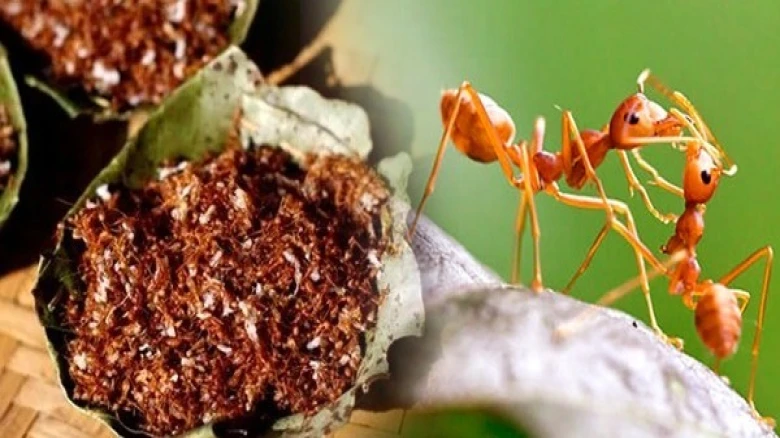This chutney is renowned in the region for its medicinal and nutritional properties...
Digital Desk: Insects, a traditional food source consumed globally for centuries, take center stage in Odisha's Mayurbhanj district with the renowned "Kai Chutney." This chutney is renowned in the region for its medicinal and nutritional properties. This distinctive savoury chutney was awarded the geographical indication (GI) tag.
Mayurbhanj's tribal communities, reliant on collecting and selling these insects, meticulously prepare the chutney. Weaver ants, known for their painful sting, are sourced from the lush Similipal forests, Asia's second-largest biosphere. The ants and their eggs are cleaned before being incorporated into the chutney, a blend of salt, ginger, garlic, and chilies.
Beyond its culinary allure, the red ant chutney is celebrated for its potential health benefits. Rich in protein, calcium, zinc, vitamin B-12, iron, magnesium, and potassium, it is hailed for its role in fostering a healthy brain and nervous system. Advocates suggest its potential efficacy in managing conditions like depression, fatigue, and memory loss.
This peculiar chutney aligns with a broader movement promoting insects as a sustainable protein source. Research suggests that integrating insects into diets could address environmental challenges by replacing conventional animal protein sources like cows, notorious for emitting heat-trapping gases. Red ant chutney symbolizes a shift towards a more sustainable food system, acknowledging the ecological impact of dietary choices.
In Mayurbhanj, hundreds of tribal families find livelihoods intertwined with the red weaver ants and their prized chutney.
As this distinctive delicacy gains recognition through the GI tag, it not only celebrates cultural culinary traditions but also underscores the potential of insects in shaping a sustainable and nutritious future.








Leave A Comment